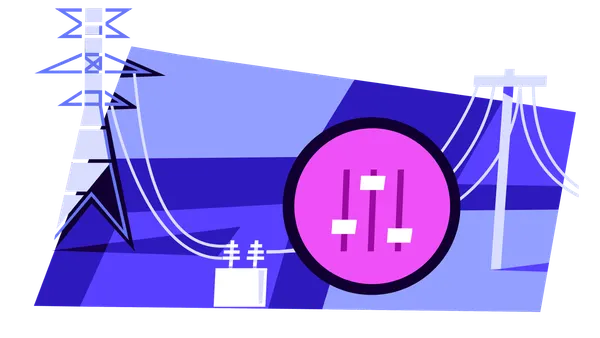While 2020 has obviously been challenging on many fronts, one of the surprising upsides we have seen in the power industry is that the vision of a very high renewable energy penetration grid is not only technically feasible, but it might arrive faster than anyone anticipated. I wrote in Utility Dive this past August, detailing the experience of electricity markets in Europe during the pandemic, which was characterized by large shares of renewable energy on the grid and the shutdown of much of the continent's baseload generation capacity.
A key component of this transition is the deployment of flexible generation - primarily grid-scale batteries - that allow for the optimization of these renewable resources. At Wärtsilä, our focus has been not only the deployment of these flexible storage assets but most importantly their optimization through asset-level and portfolio control.
This strategy has led to many interesting conversations with our customers, allowing us to collaboratively find new ways to increase the value of energy storage assets. One of the most exciting, and the key to the growth of energy storage as a market category, is the ability to leverage artificial intelligence for automated bidding of stored renewable power into competitive electricity markets.
This has the potential to be a game-changer for energy storage, mitigating the risk from merchant revenue streams atop the already clear benefits provided by grid-scale batteries.
The market is taking notice. In my conversations with IPPs, I am increasingly hearing that operators are rethinking their trading strategies to incorporate storage and take advantage of these potentially lucrative arbitrage opportunities. These customers typically fall into two categories.
The first is the traditional IPP, with large, diverse asset portfolios and sophisticated trading desks. These customers already have robust trading operations but see storage as a new asset that they can incorporate into their strategies. They realize that operating grid-scale battery storage has key differences compared to traditional thermal generation. The discharge of stored power to meet market demand must be balanced with optimization controls across assets to ensure that the operation of these assets does not degrade the battery's useful life. For example, a couple of good years upfront where the battery is drained beyond safe levels to meet high price market conditions could have an adverse financial impact over the life of the asset. Wärtsilä's GEMS platform, using our IntelliBidder market bidding software, manages the optimal operation of the physical storage asset while accounting for the value of the market arbitrage opportunity.
The second customer category is the renewable IPPs. Unlike the traditional IPPs with large asset portfolios, these companies usually do not have established trading desks. Most of the power generated is committed under PPAs, so the need for sophisticated trading strategies has not been required. But these companies are coming to realize that with the limited merchant risk they carry, energy storage combined with automated market bidding can allow them to maximize revenue through these time-shifting arbitrage opportunities while minimizing risks associated with PPA obligations. This will be particularly appealing in the coming years as the lucrative PPAs for early renewable energy projects expire and the owners must decide between new rock bottom contract prices or taking on a level of merchant risk beyond what they've previously experienced. Utilization of auto-bidding software, like our IntelliBidder, will give these IPPs an attractive alternative to hiring an old school trading desk.
There are hurdles, to be sure. For one, I am very concerned that the energy storage integration market is lagging when it comes to cybersecurity. As more firms take their service offering from behind-the-meter to grid-scale, they underestimate the degree to which grid security impacts utility and ISO decision-making. When you talk about trading on power markets, there is a real concern that an adversarial state or non-state actor could massively manipulate the generation characteristics of a whole portfolio of assets to cause a cascade of failures that brings down the entire grid. The industry must address this and fast. I am particularly proud that Wärtsilä is out front leading on this, with our GEMS Power Plant Controller becoming the first (and so far only) storage control platform to receive IEC 62443 Cybersecurity Certification.
Another challenge is market structure. It is important that regulators have clear, well-established rules and mechanisms that facilitate the growth of these markets. There is no one-size-fits-all approach and policymakers should examine a variety of market structures to emulate. California and Australia have well-established rules and offer a good roadmap for enabling auto-bidding in competitive markets. Texas is also a good example, with a $9,000/mWh price cap that was reached two summers ago. Though the lack of resource adequacy and capacity payment structures means that generators in Texas take on more risk whereas a generator in California may have roughly 20-40% of system cost covered by other revenue streams. The U.K. is also a very interesting market, with the shutdown of coal-fired generation, a nuclear plant shutting down in the near future, and high penetration of wind power. And they have a robust market mechanism that includes capacity payments.
But despite these near-term challenges, this is clearly the direction the industry is moving. Power generators are looking for new, innovative ways to squeeze more value out of their energy storage assets. Integrating auto-bidding into the operation of renewable energy and energy storage assets unlocks a part of the electricity market value chain previously unavailable to them. It is a sign of maturation and sophistication for the ever-growing energy storage market. And it will be an indispensable feature of electricity markets with increasing levels of renewable energy and flexible generation.










